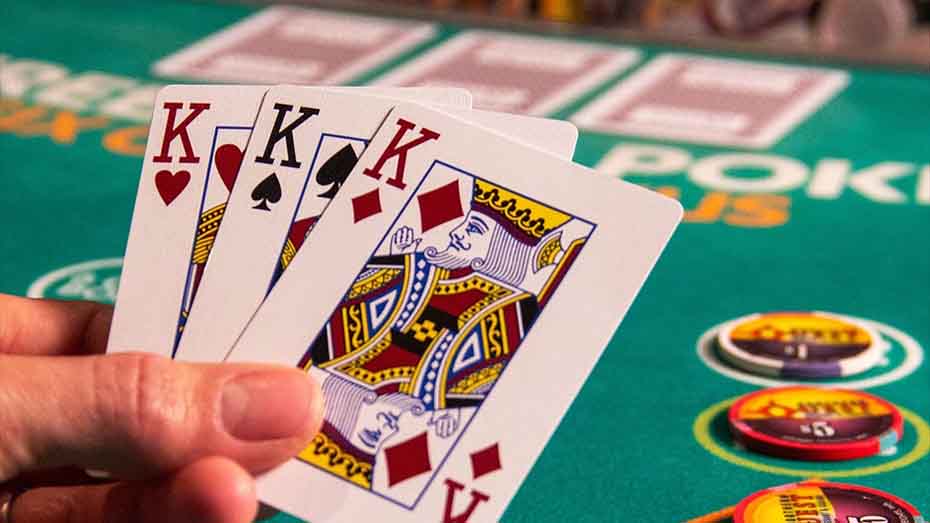Navigating the Cards: A Deep Dive into India24bet Poker Hands
A universally accepted poker hands classification system forms the foundation of various poker variants. This system serves to evaluate and compare the relative strengths of diverse poker hands, enabling players to ascertain the superior ones.

This standardized ranking system is integral to widely played poker variations like Texas Hold’em and Omaha, as well as poker-based casino games such as three-card poker. It is imperative for players to gain a comprehensive understanding of these rankings to effectively assess the quality of their hands in different poker scenarios.
Poker Hands: Ranking from Most Powerful to Least Powerful
Poker-hand rankings provide a hierarchy of card combinations, determining their strength in the game. Ranging from the formidable Royal Flush to the modest High Card, these rankings establish the pecking order of hands from the most potent to the least powerful in poker.

Royal Flush
The royal flush stands as the most powerful hand in poker, featuring five consecutive cards of the same suit, ranging from 10 through to ace.
Straight Flush
Any five successive cards of the same suit, excluding the royal flush, constitute a straight flush. Only a royal flush or a straight flush with higher-ranked cards can surpass it.
Four of a Kind
Consisting of four cards of the same rank across all four suits, the five-card hand is completed by the highest card among the others present.
Full House
A full house comprises three cards of the same value in three different suits and a separate pair of the same rank in two different suits within a single hand. In case of a tie, the player with the highest three of a kind wins.
Flush
A flush involves five cards of the same suit, without a specific numerical order. In the event of a tie, the hand with the highest-valued card prevails.
Straight
Comprising five cards of consecutive numerical value, potentially spanning more than one suit. While an ace can rank as both low (below a 2) or high (above a king), it cannot assume both roles within the same hand.
Three of a Kind
This hand includes three cards of identical rank across three different suits, with the two highest remaining cards completing the hand.
Two Pair
Two pairs of cards with matching ranks form this hand, and the highest remaining card contributes to its completion.
Pair
A pair is constituted by two cards of the same rank in different suits, and the rest of the hand is formed by the three highest-ranked cards available.
High Card
The high card represents the lowest-ranked hand, with the highest card in the hand determining its strength. In the given example, the king of clubs is the highest card.
| Rank | Hand Name | Example | Probability | Combinations | Description |
| 1 | Royal Flush | 10, J, Q, K, A (Hearts) | 30,939 to 1 | 4 | 10, Jack, Queen, King, Ace, same suit |
| 2 | Straight Flush | 8, 9, 10, J, Q (Clubs) | 3,437.8 to 1 | 36 | Five consecutive cards, same suit |
| 3 | Four of a Kind | 7 (Diamonds) | 594 to 1 | 624 | Identical playing card within every set of four suits. |
| 4 | Full House | 5, 5, 5, 8, 8 (Spades) | 37.5 to 1 | 3,744 | Combining a pair and three of a kind in the same hand |
| 5 | Flush | 2, 6, 9, Q, K (Hearts) | 32.1 to 1 | 5,108 | Five cards sharing the same suit, arranged non-sequentially. |
| 6 | Straight | 4, 5, 6, 7, 8 (Mixed) | 20.6 to 1 | 10,200 | Five cards in numerical order, not same suit |
| 7 | Three of a Kind | 9 (Clubs) | 19.7 to 1 | 54,912 | Trio of identical cards accompanied by a pair of non-matching cards. |
| 8 | Two Pair | 3, 3, J, J (Diamonds) | 3.26 to 1 | 123,552 | Two distinct pairs featuring identical cards within a single hand. |
| 9 | One Pair | K, K (Spades) | 1.28 to 1 | 1,098,240 | Pairing of the same card |
| 10 | High Card | 2, 7, 9, Q, A (Mixed) | 4.74 to 1 | 1,302,540 | No matching cards |
Kicker for Tie-Breakers
In situations where multiple players hold identical poker hands, the resolution lies in the deployment of additional cards known as “kickers.” The participant boasting the higher kicker emerges victorious and claims the pot.

Illustration with Texas Hold’em:
Player A reveals K♥ 9♥
Player B unveils A♠ K♦
As the K♠-T♣-T♦-4♠-2♣ unfolds on the flop, turn, and river, the final five-card poker hands for the players are as follows:
Player A: K♥ K♠ T♣ T♦ 9♥, forming Two Pair with Kings and Tens and a Nine kicker
Player B: K♦ K♠ T♣ T♦ A♠, crafting Two Pair with Kings and Tens and an Ace kicker
Despite both players holding a pair of kings, Player B clinches the pot by having a superior kicker, thereby “out-kicking” Player A.
In instances of tie-breakers in high card or one pair hands, the possibility of identical kickers arises. In such scenarios, the second kicker comes into play, followed by the third, and so forth. If the best five-card poker hands of both players remain indistinguishable, the pot is shared equally between them.
Poker Hand Probabilities
In the realm of poker, a fundamental skill that distinguishes novices from seasoned players is the comprehension of hand odds. Hand odds represent the likelihood of achieving a specific hand or enhancing it in subsequent rounds. By adeptly calculating hand odds, players empower themselves to make strategic decisions concerning bets, calls, and folds, ultimately optimizing their chances of triumph. Let’s explore the intricacies of poker hand odds and how they can be wielded to one’s advantage:

Computation of Hand Odds and Pot Odds
Hand odds are commonly presented as a ratio or percentage, signifying the probability of completing a particular hand. To calculate hand odds, the player must evaluate the number of cards that can improve their hand (known as outs) and compare it to the total number of unknown cards in the deck. The formula for hand odds is expressed as number of potential outs divided by the total number of unknown cards.
For instance, if a player holds four cards to a flush after the flop, with 46 cards remaining in the deck, the hand odds of completing the flush on the next card (the turn) would be calculated as:
Hand Odds = 9 (number of remaining cards of your suit) / 46 (number of unknown cards) ≈ 19.57%
Significance of Outs in Poker Hands
Outs are the pivotal cards that can enhance a player’s hand, leading to a winning combination. A comprehensive understanding of the current number of outs is crucial for accurate hand odds calculation. Examples of outs encompass:
Implied Odds: Anticipating Future Betting
Beyond hand odds, players frequently factor in implied odds when making strategic choices. Implied odds consider the potential additional bets that could be won in subsequent betting rounds upon completing the hand. This involves estimating the anticipated value of future bets and integrating them into the current decision-making process.
For instance, having a flush draw and anticipating an aggressive opponent likely to bet significantly if the flush is completed increases the implied odds. In such scenarios, making a strategic call or even raising may be more profitable, even if the immediate hand odds seem less justifiable.
Skill Mastery through Practice and Patience
Accurate calculation of poker hand odds demands practice and hands-on experience. With increased gameplay, players develop the proficiency to swiftly assess their outs and make
informed decisions. It’s essential to recognize that poker is not only a game of skill but also one of patience. Relying solely on luck can jeopardize long-term success in the game.
FAQs
Conclusion
In conclusion, a thorough understanding of poker hand rankings, tie-breaker scenarios, hand odds, and the strategic use of implied odds are fundamental for any poker enthusiast. Navigating the intricacies of these elements not only enhances gameplay but also underscores the blend of skill and patience required for sustained success in the dynamic world of poker. Whether pursuing the coveted Royal Flush or strategically calculating hand odds, players armed with knowledge and experience are better equipped to make informed decisions and elevate their poker prowess.

















